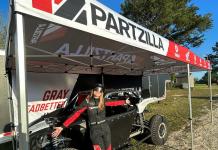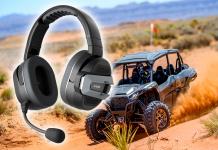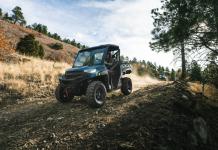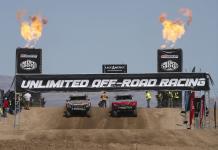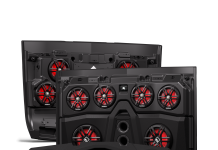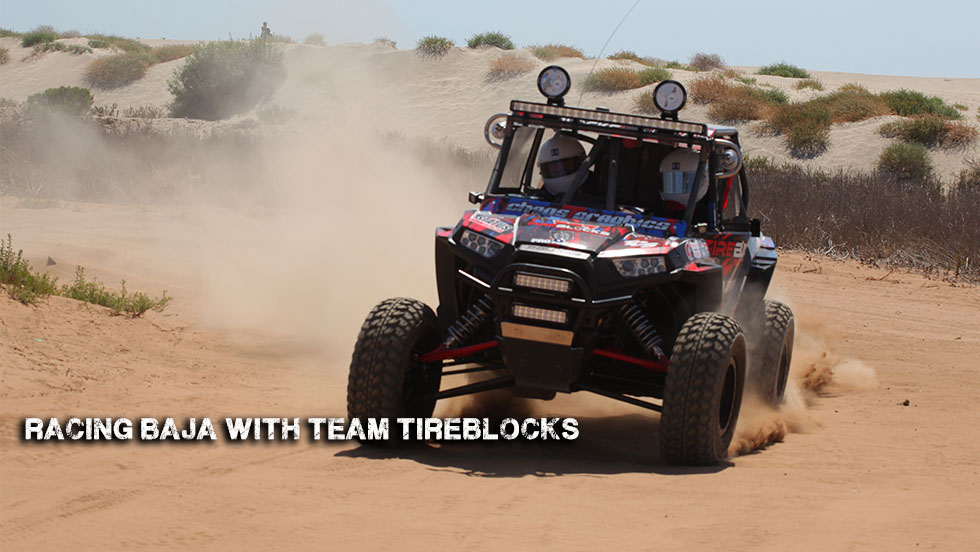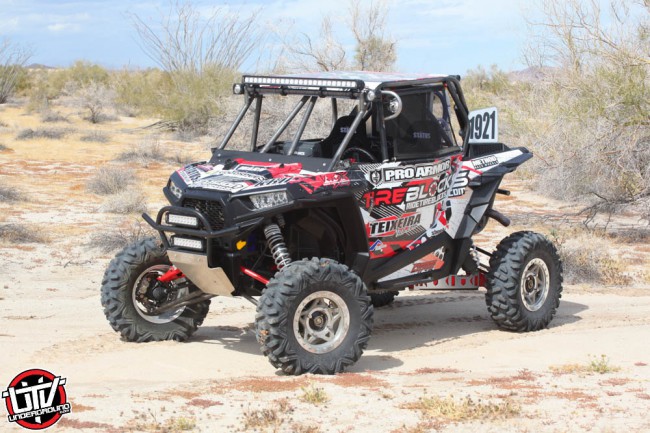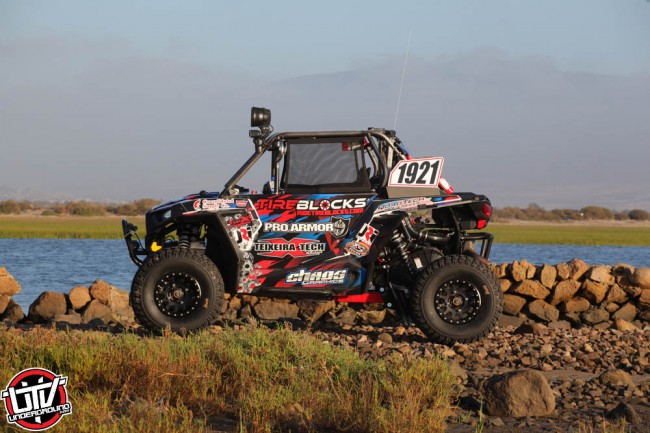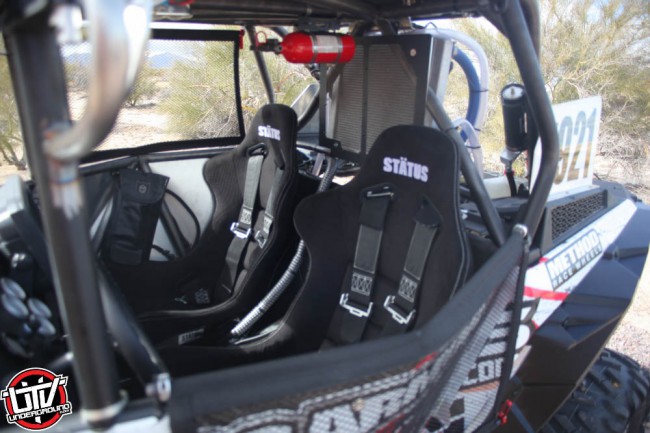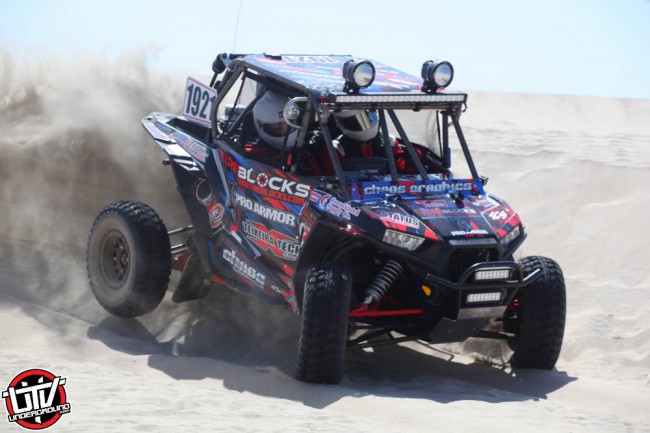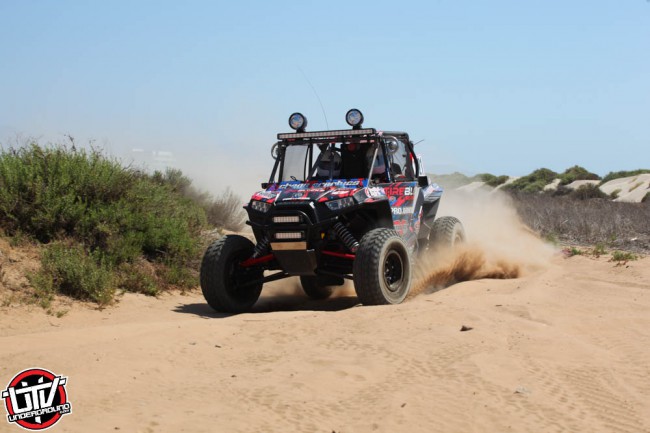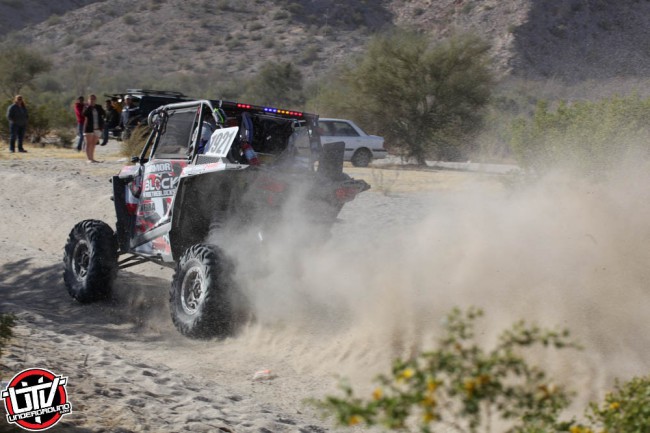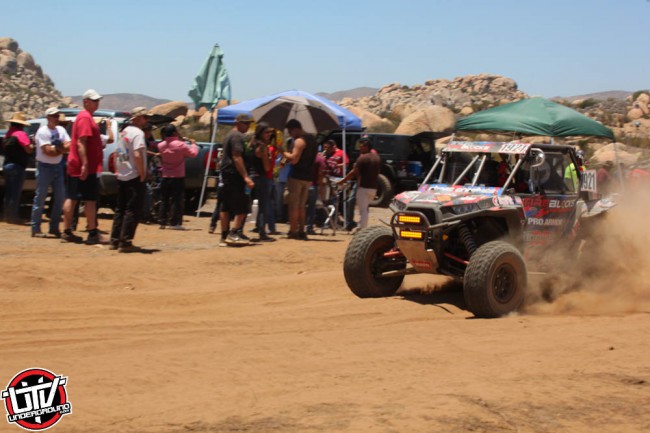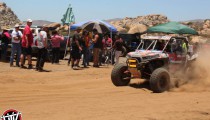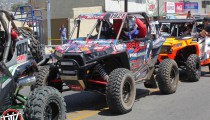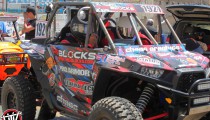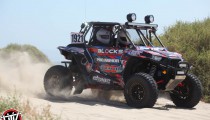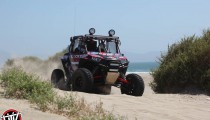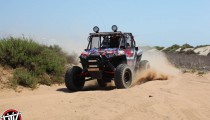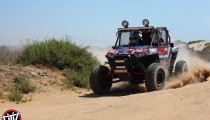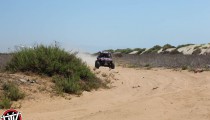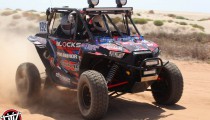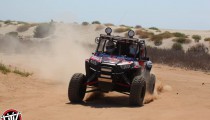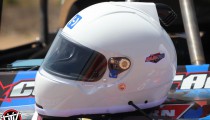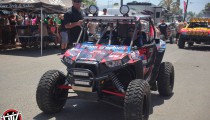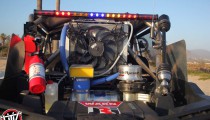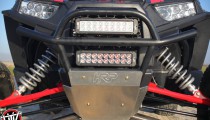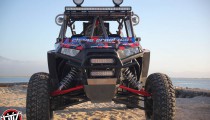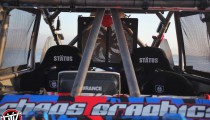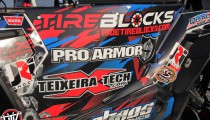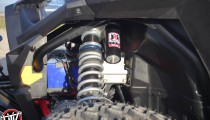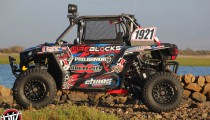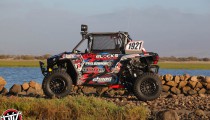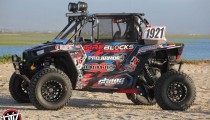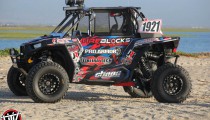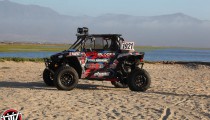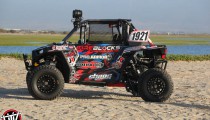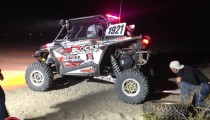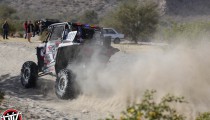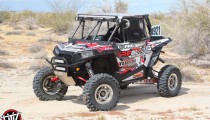Racing Baja With Team TireBlocks
By: Nick Nelson
MAKING THE TRANSITION
15 Years Behind Bars Now It’s Time For A Cage!
Racing south of the border has been my drug of choice quite a while. I figured out, I wasn’t gonna make my fortune racing the ATV Nationals sometime around the year 2000. An invite to race with a friend’s team in the Baja 500 was all it took. I had a new passion and was determined to spend way more than I was ever gonna make trying to conquer it. I built my own team and we managed a handful of podium finishes but it wasn’t until the 09 Baja 500 that we got that first W.
2010 I teamed up with some new racer friends from Washington State. Kenny Sanford, Jorie Williams, Mike Bender, Mike Kelley and I were finally able to win a Championship as well as the coveted Baja 1000 overall. As always, it was a great time and we made some great friendships that year as well. That same race, Jamie KirkPatrick and Kalani Korn from Warn Industries helped chase and caught the Baja bug as well. While that Baja 1000 was the start of many great friendships, it was also the birth of the TireBlocks run flat system.
In 2010 if you were serious about desert racing, you were running TireBalls for run-flat protection. TireBalls consists of 12-14 individual inflatable bladders inside each tire, instead of just the tire being filled up with air. They worked well enough, and the ATV teams using them, were able to push harder without worry of flatting, leading to better finishing times. While they were good, they definitely weren’t flawless. Vibration was the biggest issue as if the balls shifted or one or more was punctured they could shake the bike to pieces. Kenny being the thinker of the bunch, was determined that it could be better. Two vibration mandated tire changes early into that race sealed the deal.
Kenny and Jaime drove back from Baja that year with the OA trophy, and a brainstorm to make a better ATV run flat system with foam blocks. The next months were spent researching, locating, and testing different types of foam for the right combination of feel, durability, and heat resistance. As the product developed they were able to race and win an overall ATV championship for 2011 on prototype blocks. The other big unknown was finding the proper lubricant. They experimented with the competitions lubricant, and then actually raced the entire first year using extra virgin olive oil. The relatively inexpensive olive oil was actually proving to work really well until the prepped tires went through a snow storm and it coagulated. They finally settled on fairly costly mineral based lubricant that wouldn’t coagulate, nor eat at the foam over time.
The one thing that always kept me excited about racing in the desert was the idea of transitioning into a cage. Every desert racer (or any red blooded male for that matter) dreams of racing a Trophy Truck in Baja, that is a given and I have been waiting patiently for my turn. Truth be told I might never get that chance to race a 800HP trophy truck, but the recent influx of bigger and better UTV’s has opened up another door. Machines like the Polaris XP1000, Can Am Maverick, and the Arctic Cat Wildcat are quickly proving to make very capable race cars in the desert. These 1000cc UTV’s are by no means Trophy Trucks, but they are definitely a more achievable way to go racing with the safety of a roll cage.
Jamie Kirkpatrick and Kenny Sanford saw this same Baja potential in the RZR XP1000. Over the past few years, the UTV class has evolved from over built, one off Rhinos that rarely finished a race, to very capable, sometimes even factory supported race vehicles. Much of this evolution can be accredited to companies like Polaris that keep pushing the performance envelope with bigger and badder UTV’s. Polaris’s new XP1000 just begs to be driven fast, and the desert is its proving ground. Well over 100 HP in stock form, 18 inches of travel, 29 inch tires, a 90 inch wheelbase and13.5 inches of ground clearance. This looked to be the perfect starting point for Baja racer, so Jamie picked up one of the first in his area. Jamie and Kenny leaned on veteran RZR builder Mark Holz for some cage design ideas and went for it.
Kenny Sanford of TireBlocks happens to be a jack of all trades kind a guy. Part mechanic, part fabricator, with a lengthy history of building custom race ATV’s and motors. Building a full-race RZR seemed like the next logical step! Ripping into it like Pro’s, Kenny and Jamie fabbed a lightweight chromoly cage, relocated the stock radiator to behind the seats, and then went to work on a fuel cell. The toughest part of building a SCORE and BITD legal race RZR is the fuel cell. If you start with a 4 seat chassis, there is plenty of room for a generic commercially built fuel cell where the rear seats would normally be. If you opt for 2 seat chassis, options are a lot more limited. The simpler, and cheaper way is to mount one of these same fuel cells in the back over the motor. The problem with this option is that intentionally mounting 100 pounds of fuel up high, and over the back shocks is the worst thing you can do for the handling characteristics of your UTV. Option number two is to fab a completely custom, aluminum fuel cell under the seats. This keeps the weight low like the stock tank for optimal handling, but gets very expensive as it requires a custom “race legal” bladder from Fuel Safe. In addition to the custom fuel cell, this “legal” bladder can run anywhere from 3-5 thousand dollars.
Kenny leaned on a friend in the heating and air business to bend up a fuel cell using every square inch of space under both seats. When it was done, Jamie was able to give Fuel Safe the dimensions and have a 16 gallon capacity bladder built. With the fuel cell being handled, they also collaborated on a super trick aluminum dash, door skins, and a roof. As the car was starting to come together, the San Felipe 250 was coming even faster. San Felipe was going to be there first race and they just needed to get through it without failure buying some more time for the Baja 500. Super comfortable, and really low Status Racing Seats were chosen to keep driver the drivers body weight as low as possible, further lowering the center of gravity.
The GPS OffRoad tires they were planning on running were not quite released yet, so they opted to run the narrower stock 29″ front Maxxis BigHorn tires all the way around. They mounted them on method beadlock wheels with UTV spec TIreBlocks. The plan was to run the entire SCORE desert series without the additional 50 pounds of carrying a spare tire/wheel. This plan was intended to prove how good the Blocks actually are. In theory the TireBlocks could safely get them between pits in the event of a flat, and losing the weight off the rear would drastically improve handling. They also used a bluetooth device that would monitor tire pressure and notify them in the event of a flat. This early notification would hopefully keep them from passing a pit on an unnoticed flat. This additional mileage brings unneeded heat and potential for block failure, if they could avoid it their plan would work.
As the 250 was upon them, they finished up everything needed to pass tech before heading south. A super high capacity Gel type battery was installed from XS Power. The stock type “wet” acid battery is not legal and the gel batteries can be mounted safely in any position necessary. Pro Armor 3×3 safety harnesses were installed as was a Pro Armor steering wheel. Score racing has gotten a lot more technical over the past few years, and the course is now mapped by GPS with mandatory virtual checkpoints along the proper course. To minimize the chance of missing any of these “virtual” checkpoints, or getting lost, Jamie went for the big dog of GPS’s. The Lowrance HDS 10 GPS features a 10″ High Definition screen and looks like a television set mounted in front of the co-driver. Radio Communications were handled by Rugged Radios with a 2 place intercom and a 50watt race radio.
The TireBlocks RZR was loaded into the trailer with 3 miles on the odometer to head south for San Felipe 250. They stopped at Teixiera Tech along the way to pick up lower a-arms and Radius Rods. Although very last minute, the Teixiera Tech arms and radius rods were built out of extremely strong chromoly to exactly the same specs as stock. The build was slated to run fully adjustable JRI shocks, but time constraints lead to running the stockers for that first race. Their next stop on the trip south was my house. In last minute fashion they twisted my arm into coming down with my XP4 for pre-running, chasing on Raceday and emergency parts. I also donated a Pure Polaris UHMW HD skid plate that had been sent my way for testing. I know from experience that the skimpy stocker would never make it through a Baja race, and the lightweight, durable UHMW Pure Polaris skid was the perfect solution.
That first race was a huge success for them. In an effort to just drive for a finish, Jamie and Kenny ended up running top three for pretty much the whole race. The Hawkshead Tire monitoring device worked perfectly and they were able to radio out to us via the Rugged Radio’s race radio notifying us that they would be needing a new right rear tire. We swapped out the tire “that wasn’t even noticeably flat yet” in probably 45 seconds and they were back in the game. The Last thirty miles of the race had issues in store for the top three teams and Marc Burnett blew by for the win. The TireBlocks car had one of the stock front shocks completely blow out the reservoir in the deep whoops leading to the finish. Once again they were able to easily reach us on the Rugged Race radio and we headed in to cannibalize a shock off our four seater. What could have been a quick swap for a second place overall turned into a cluster of a pit, as we needed two jacks and didn’t have even one.
Lesson learned, a hard fought fourth place finish and we would be carrying a lightweight jack on the race car as well as on every chase rig. The team went back to Washington and started prepping for the Baja 500. JRI got them there shocks a few weeks after the 250 and they were able to actually get some test time dialing them in for the smoothest, most predictable ride you could imagine. As the Baja 500 would be many hours in the dark, tons of Vision X lighting was installed as well. Kenny and Jamie also went to work fine tuning the clutch set up. The race spec XP was kept as light as possible but it is definitely heavier than a stocker. The heavier than stock, but relatively lightweight UHMW skid was still in mint shape after the San Felipe 250, they even opted to leave it alone for the notoriously brutal Baja 500 race.
GPS Offroad got them dialed in on the new GPS 5001 tires. These tires are a 8 ply 30x10x14 tire with a low rolling resistance tread pattern, similar to an older, but very popular buggy tire. New TireBlocks were cut for the larger size tires and they mounted them on 14″ Method beadlocks again. Since they wouldn’t be carrying a spare tire, Jamie installed a small Pelican case into the bed area of the race RZR. This Pelican case was filled with the typical anti-rattle foam and properly stocked with every necessary tool, spare part, and even a trick scissor jack.
Two weeks before the Baja 500 I got the call I was expecting, to go help them out for the Baja 500. Only this time, it was an invite to drive the second half. TireBlocks had Kenny extremely busy with work, the car was ready ahead of time, and he was not going to be able to make it. I contemplated for about 1-2 milliseconds and asked when we were leaving. Four days later we were loading up the XP1000 4 and a John Deere Gator RSX850 to go pre-running. Pre-running was a blast compared to the work we usually put in for an ATV race. Jamie and his Dad “Dan” would be racing the first half and I would be driving the second half with my good friend “big” Frank. We decided the best plan of attack was to load up the whole crew in the XP 4 and the John Deere, and pre-run the whole course together with backpacks for clothes and staying at Hotels along the course. I had always wanted to do this, and was finally able to include my wife in the festivities. Frank was working during the week, but Kalani Corn from Warn Industries was ready for an adventure, and came with.
The trip was a blast, we had a few slight issues along the way with the XP4, but it did already have quite a few miles on her. The sway bar mount peeled away from the frame, but we were able to find a welder to expertly re-install it with his 1950’s ARC welder. He really did lay a nice bead for us, and the 60 year old ARC welder with bare wires for a power plug was just the icing on the cake. The John Deere was flawless, impressive to say the least. While nowhere near as fast or plush as the RZR, it kept rolling along at a steady pace for three days. One flat tire, a mere 10 miles from the finish of our pre-run was the only time we had to do anything but add gas. The old adage “Nothing Runs Like a Deere” was really up to par on this 500 mile adventure.
RACE DAY
The moment I’d been waiting for. Jamie and Dan would be starting the race as the 13th UTV off the line, out of an impressive 17 entries. The UTV’s are also one of the very last classes of race vehicles to leave the line in the Baja 500. The only thing behind our Pro UTV class was a couple cars in the sportsman UTV class, and a few other oddball sportsman class vehicles, maybe 6-7 vehicles total. My wife and I went to OJOS Negros for the first visual at RM 36. Jamie and Dan came through in 6th place physically, which meant they were really moving along good. Kalani and Nick Destout were waiting at RM80 in Santo Tomas to pit them, and we called to let them know they were coming in strong. It seemed like forever waiting for the confirmation from our Pacific side chase team. Just when we thought something had to of happened, we got a call. They had just pitted them, they were in second place overall, but nearly 25 minutes behind the leader Marc Burnett.
Apparently they had experienced an extremely congested bottleneck with some of the less capable class vehicles severely stuck, clogging the race line up a hill climb. While many were waiting in line, Burnett made the executive decision to put his 4WD to use and circumvent the whole thing. There was a lot of moaning and groaning online about this after the race, but had I seen the opportunity, the racer in me would have done the same thing. Jamie was able to get around it as well, but it took a bit and opened up a serious lead for Burnett. As the race headed down the Pacific coast, there was another similar bottleneck right in front of the TireBlocks car. While Jamie tried to back down the hill to find another line, the XP came off a decent sized ledge landing on it’s roof like a cockroach. They got out and flipped the car over unscathed, only to witness another UTV do the same thing. As good hearted sportsman’s, they assisted the “car” flipping them over as they were still out of their car. This team took clear advantage of the situation and their kindness, peeling off ahead, leaving them to fight there dust for the next miles.
While waiting in Valle de la Trinidad for the car to show up, we were constantly calling on Kenny back in Washington to track the vehicle and update us. According to Kenny they would be traveling along at a relatively good race speed, then they would be stopped for long periods of time, then going again. We assumed they were battling a broken car, and might be limping it in. The first few cars came through way ahead, and we prepared for the worst. About 10 pm, maybe 3 hours after we had expected them, they showed up tired but relatively unscathed. The car was in perfect condition, but they had been stuck in multiple car bottlenecks where slower cars had gotten stuck in the notoriously silty and nasty Mikes Sky Ranch section. The stuck or broken cars had clogged up the only passable line, allowing the race leaders to run away with an even bigger lead.
Frank and I jumped in the TireBlocks car, antsy and excited to finally drive. The car was in perfect shape, and unlike Jamie’s slower, dust filled, more technical section, mine was really fast. I started off with a section of San Felipe whoops that I was dreading a little after pre-running. Pre-running in the stocker, during the extreme heat of the day, was nothing like driving the fully prepped race car, at night, and with no dust. It was a blast, and I didn’t care that 5th place was half an hour ahead. The JRI shocks were set up really well, they didn’t fade in the whoops and the car stayed super level and controllable. One of our biggest mechanical worries with racing a XP1000 is the clutch belt. Kenny had installed an ALBA gauge that actually monitors clutch belt temperature. In theory, if the gauge gets anywhere near the red, you can back out of it for a little while and watch the temp come down before crystalizing and exploding the belt. Coming back uphill in the sand wash returning to San Matias we saw the clutch temp rise under the increased load. We backed out of it for a couple minutes, the temp dropped and that was the last we ever heard about it. Apparently the gauge works and the TireBlocks car has not lost a belt for either the San Felipe 250 or the Baja 500.
We finished with the worst of the whoops, pitted for fuel and took off again into the faster sections of the course. The VisionX light bars produce a ton of light. Kenny and Jamie had also decided on a last minute addition of two Vision X Light Cannon’s. These high wattage pod lights look similar to the bigger HID race lights, but are actually powered by extremely powerful LED lights. They were a spot pattern and we quickly realized that we need to run filters on them for the 1000. Available filters can turn the spot pattern into a more useful euro driving type pattern. The light shot out incredibly far into the distance, incredible, but not really usable. After an hour or so we experimented with turning them off and ended up leaving them off to the finish. We passed a few slower cars that were in front of us, but never saw a UTV. Leaving the K77 crossing there was a Trophy Truck behind us that must have been recovering from an issue early on. Knowing that the course was really twisty and technical, I put a little extra in it, to stay out front as long as possible. When a Trophy truck passes you, the dust hovers for what seems like forever and you literally have to sit off the course for a minute or two. You truly realize how capable these things are when you’re running from an 800 HP trophy truck with 39 inch tires. Our advantage was over as soon as we got to the faster dirt roads heading into OJOS, so we pulled over and let them by.
The TireBlocks car was in great shape, everything still felt tight and it was as responsive as when it left the line. Jamie’s XP does not handle anything like what I expected out of a desert UTV. The JRI shocks do an excellent job of smoothing out the rough, but they’re not “wallowy” and they don’t wander like you would expect. In the technical, tighter stuff you could literally pop into a double whoop or curb like you do on a quad. We passed the final pit in OJOS Negros and headed for the Ensenada Finish line. Some hovering dust gave us hope as we thought we might be catching a struggling UTV, but turned out to be race Bronco, that was really determined to leave us eating his dust. We would catch him immediately when there was hard pack, and then like clockwork he would hit a silt and leave us in a complete whiteout. A slightly sketchy pass allowed us the chance to return the favor for a few miles before leaving him in the dust.
THE FINISH LINE
We did it, we finished the Baja 500. We did this without the extra weight of a spare tire proving the overall success of the TireBlocks. Our few bottleneck hold ups will lead to a slightly more aggressive starting plan for the 1000, but I truly believe that we have what it takes to win. As sales are skyrocketing for TireBlocks, I’m sure our weight and handling advantage will be shared with a few more teams for the 1000, but I’m pretty sure Kenny has a few more tricks up his sleeve as well. At the finish line of the Baja 500, we were well behind the leaders but our car was solid enough to run another 500 miles. Some more testing, another great race prep and we should be on top in November.
2014 Polaris RZR XP1000
Owner: Jamie Kirkpatrick
Chassis: 2014 Polaris XP 1000
Cage: Kenny Sanford Fab
Front A-Arms: Teixeira Tech
Rear Arms: Factory
Rear Radius Links: Teixeira Tech
Shocks: JRI ECX 3 Triple Rate Coil Overs with adjustable Hi-Lo Speed Compression and Rebound
Sway Bar: Factory
Axels: Factory
CV’s: Factory
Engine: Stock ProStar XP1000
Exhaust: Factory
Transmission: Factory
Fuel Cell: Custom Under seat with Fuelsafe Bladder
Battery: XS Power Gel Cell
Wheels: 14″ Method Beadlocks
Tires: GPS Offroad 30″
Run Flat System: TireBlocks Run Flat System
Seats: Status Race Seats
Safety: Pro Armor 3″ x 3″ Harnesses
Graphics: Chaos Graphics
Lighting: Vision X Lighting
Communications: Rugged Radios 2 Place Intercom & 50w Race Radio
GPS: Lowrance HDS 10
Bumpers: Holz Racing Products
Skid Plate: Heavy Duty Pure Polaris UHMW
Rear Wheel Rock Flaps: Quadtech
Steering Wheel: Pro Armor


